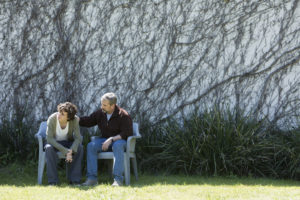Human trafficking is the exploitation of people, depriving them of their basic human rights for profit. Thousands of men, women, and children are trafficked annually, both in and out of the United States.
Although slavery was abolished in America in 1865, holding people captive as slaves is one of the fastest growing criminal operations in the world. In terms of illegal profits, human trafficking ranks directly behind the drug trade and just narrowly ahead of the illegal arms trade.
San Francisco’s staggeringly high rate of human trafficking is due to its dense population and attractiveness to young people. Additionally, San Francisco’s coastal location makes it an ideal hub for human trafficking. “Exploiters may drive young people up and down the Coast. Landing in an urban environment is common,” Carly Devlin, the project manager for the Huckleberry Advocacy and Response Team (HART), said. Huckleberry Youth Program serves the youth of San Francisco with the aim of creating safe, nurturing environments.
Youth struggling with poverty, abuse, homelessness, homophobia, and foster care are often lured into human trafficking. In terms of homophobia, specifically, “a lot of LGBTQ youth run away from home or are kicked out as they don’t have supportive families. They are then homeless and at risk of being sex trafficked,” Minouche Kandel, the Director of Women’s Policy for the Department of Status of Women, said. Once homeless, youth are in a state of extreme vulnerability and turn into the perfect target for a trafficker. Human trafficking can provide basic necessities for its victims, such as shelter and income. Although this sentiment often lacks sincerity, being caught up in youth human trafficking often comes from a place of longing for security, stability, comfort and love.
As an example, one anonymous survivor found herself out on the streets after leaving her home because of a lack of parental support. “My sense of survival started at a very young age. I had to always go out and get it on my own to survive. That’s when I completely just rebelled. I didn’t want to go home, I didn’t want to listen,” she said. Her home was volatile and unstable. Her father was an alcoholic and her mother went through phases of not coming home for nights on end.
“It was when I was 12, when I was gone and didn’t come home at all. I was at somebody’s hotel room, and we were all just drinking and I met this guy.” She stayed with him for weeks at his home in the East Bay. “He was my boyfriend, I guess. He was somebody; I didn’t have anybody, but he was somebody. I didn’t have to keep running from people house to people house anymore. I didn’t have to worry about where I was going to sleep. I didn’t have to get high all night just to stay awake. When I was with him, he just took me in. He made me feel really special. He made me feel really loved. It was the feeling I hadn’t felt in so many years.”
Given San Francisco’s progressive political tendencies, many local politicians have taken to prioritizing the issue of human trafficking. Commercially Sexually Exploited Children (CSEC), specifically have been identified as a topic of concern.
San Francisco is a magnet for commercial sexual exploitation, and specifically that of children. Additionally, many CSEC have had prior involvement in the Child Welfare System, which was unable to fully support their needs. This cycle suggests a city-wide systematic breakdown. Many CSEC are criminalized and thrown into the juvenile justice system.
To combat this issue, the Child Welfare Council created the Commercially Sexually Exploitation of Children (CSEC) Action Team. The Child Welfare Council was created in 2006 by the California Legislature with the intention of strengthening the collaboration of multiple organizations, agencies and courts that work with the youth in the state’s welfare system. The CSEC Action Team consists of over 50 organizations who work with children at risk. The Action Team also conducts research on how to further work with the issues around CSEC, looking at both prevention and intervention. They also work on instructing California counties on how to deal with this problem within their communities.
To further improve this issue, Jerry Brown, California’s governor, and the Legislature passed SB 855 in June 2014. This bill established that CSEC would be served through the child welfare system. The bill acknowledges CSEC as victims of child abuse and neglect, rather than as criminals. It also created a CSEC program, which started in 2015, that aimed at serving CSEC, both those at risk and already identified. The CSEC program established a connection between a multitude of organizations to coordinate on the approach in a more general sense. SB 855 also gave an initial $5 million to train the staff that would be working with CSEC, and establish a general protocol to work on the issue. The bill also annually allotted $14 million to work with California counties on implementing the ideas outlined in the CSEC program.
Counties have the choice to opt into the CSEC program or not. If a county chooses to participate, they must develop a protocol that they promise to follow that serves CSEC. Once their outline plans are approved, they were able to begin receiving funds starting in 2015. San Francisco chose to participate in this program and therefore receives annual funding for to support CSEC.
San Francisco’s protocol, specifically, is organized around the communication and connection of organizations throughout the city. There are thirteen organizations, programs, and government departments that are on the CSEC Steering Committee which meets quarterly to examine this protocol and its implementation in San Francisco. The main aim of this model is to understand commercial sexual exploitation of youth as abuse and report it as such, as well as veering away from criminalizing it.
Within the first two to 24 hours of a suspected CSEC case, the person on the case (whether a phone call in or police report) must call the FCS Child Abuse Hotline. If the call suggests the need for an FCS Investigation, then the question of whether there is an immediate safety threat rises. If there is, the FCS Emergency Response team will intervene, along with HART. If the case doesn’t meet the threshold for FCS Investigation, then the case will be evaluated and will put the youth on to the community-based services track. This is the point at which the myriad of organizations come together to support affected and at-risk youth.
When San Francisco opted in to the State’s CSEC Program, they were joining in the acknowledgement of CSEC as needing to be treated as victims of child abuse, rather than as criminals. One main effect of this had was that now when a report that is in regard to CSEC comes in to the Human Services Association (HSA), they direct the call to HART. Huckleberry has many different branches, including a crisis shelter, hotline, clinic, and counseling.
“Our approach is different than a lot of other human trafficking programs,” Devlin said. “We don’t even really use the term human trafficking a ton. Really, what we are thinking about is trafficking as a system and the larger root causes and the issue isn’t about a young person exchanging sex for money. The issue is about vulnerability. It’s about the underlying needs of the child: Have they been involved in the child welfare system? Do they have somewhere to stay? Are their basic needs being met? Are they in an emotionally stable place?”
For Devlin, and the rest of the Huckleberry Youth Program, it is not necessary to know the full story of those who are CSEC or at risk. “We can really work with young people on what they identify their goals as being, that they can disclose what has happened to them on their own terms,” Devlin said.
According to 2014’s Human Trafficking Report, 24 percent of trafficking victims are under the age of 18 and 49 percent are Transitional Aged Youth, meaning they are aged 18-24. Transitional Aged Youth (TAY) is a concept that San Francisco implemented to protect people up to age 24, considering them “children” up until this age. With such high rates of youth trafficking, Huckleberry Youth Programs takes a very empathetic, nurturing approach to helping victims.
Due to legislation passed in 2015, CSEC were transfered to be under Child Protective Services (CPS) purview. With this, children (including Transitional Aged Youth) could no longer be arrested and prosecuted for the crime of prostitution in California. They cannot go to Juvenile Hall unless the trafficking was in conjunction with another crime. As Devlin mentioned, this was another step towards focusing on the issue as deep seeded and being a result of other issues in a child’s life.
The same anonymous survivor ends her story by saying, “When I leave out of here and I am sitting in my car and I am driving, I have to sit with my emotions. I have to sit with my feelings, I have to sit with my memories. It is always going to haunt you. That’s why I do see a therapist and that’s why I love talking about what I’ve been through because it helps the healing. A lot of people are afraid to tell their story, a lot of people are afraid to talk. Like I said, it’s a lot of shame, it’s a lot of guilt. You don’t want anybody to judge you, you don’t want anybody to look at you differently. For me, I think the more and more I talk about it, the more it helps me.”







